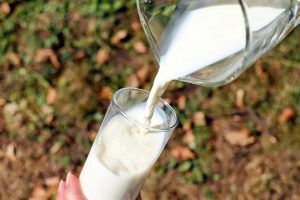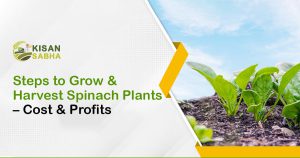Let us start with some good news on the economic front. During the first year (2019-20) of the second term of the Narendra Modi government, gross value added (GVA) in agriculture and allied sectors registered a growth of 4 per cent. This is commendable, especially when juxtaposed with the growth of overall GVA of the economy at 3.9 per cent, and overall GDP (including net taxes) at 4.2 per cent. And even in 2020-21, when the impact of COVID-19 will be on full display, and when the GDP may register a negative growth of as high as -5 per cent, agriculture may still surprise with a positive growth of 2.5 per cent, as per CRISIL’s recent forecast.
Agriculture matters not just for food security, but also for the good of the masses, since almost 44 per cent of the country’s labour force is engaged in agriculture. So, “sabka saath, sabka vikas, sabka vishwas” will not be possible unless agriculture performs in a sustained manner at around 4 per cent per annum, if not more. The potential is definitely for more.
While using China as an example may be somewhat problematic these days, let me remind the reader that Chinese agriculture growth has been about 4.5 per cent over the last 40 years. Even today, China produces three times more agri-produce from a cultivated area that is much less than ours, and with a holding size that is also much smaller (0.7 ha) than ours (1.08 ha). It is this prosperity at the bottom of the pyramid that provides a large demand base for their industrial goods. Migration out of agriculture is largely from a “demand-pull” to higher productivity sectors with better skills. In contrast, in India, at several places, migration is from a “push” factor because agriculture cannot support a large percentage of the working population.
In any case, the Modi government in its second term has started some reforms on the agri-marketing front. By liberalising the Essential Commodities Act (ECA), APMC Act, and contract farming through the ordinance route, it has made a great beginning, and I am hopeful the government will invite private sector investments in building more efficient value chains, which will be beneficial to farmers and consumers alike.
I have earlier described these reforms as a historic “1991 moment” (IE, May 18) — like the de-licensing of industry, this is a de-licensing of agri-marketing. My only reservation was regarding the fine print, and that in the amended ECA, they have inserted a clause about stocking limits being imposed in case of “extraordinary price rise”. This is being defined as a 100 per cent increase in the price of perishables and a 50 per cent increase for non-perishables over a 12-month period. If onion prices, which are hovering at around Rs 15/kg in the retail market of Safal in Delhi go to Rs 30/kg, and if the government imposes stocking limits, the whole purpose of this exercise — to attract private investment in storage — will be nullified. One can understand if stocking limits are imposed in case of natural calamity, famine, wars, etc. But beyond that, it is only for rent-seeking by the “inspector raj”.
There is another issue that we need to revisit vis-a-vis agriculture and farmers. And that relates to doubling farmers’ incomes by 2022-23. In February 2016, after two successive years of drought in 2014-15 and 2015-16, PM Modi said that his dream was to double farmers’ incomes by 2022-23. We did not take that political statement very seriously, as it did not mention whether he was referring to nominal incomes or real incomes. But in April, when he set up a committee under Ashok Dalwai to double farmers’ incomes, and the Committee said that it is real income they are talking about, and it required a growth rate of 10.4 per cent per annum till 2022-23, it was time to examine the notion carefully as all ministers and bureaucrats started rallying around “doubling of farmers’ incomes” in all their public speeches. While shifting the focus from production (tonnage-centric) to incomes (farmer-centric) was laudable, I had expressed my serious reservations about its achievement because of the following reason.
If one looks at the data on farmers’ incomes in 2002-03, 2012-13, and 2015-16, for which NSO and NABARD surveys are available, and compares it with agri-GDP growth over the same period, the trends in agri-GDP and farmers’ incomes follow each other very closely (about 3.6 to 3.7 per cent per annum). There is no official data on farmers’ incomes after 2015-16. But if we assume roughly the same relation between agri-GDP growth rate and growth in farmers’ incomes that existed during 2002-03 to 2015-16, it is possible to assess the likely achievement of this goal post of doubling farmers’ income.
Since the base year growth rate in 2015-16, which was a drought year, was meagre (0.6 per cent), the average annual growth of agri-GDP during the next four years (2016-17 to 2019-20) was 4.8 per cent. This year, in 2020-21, CRISIL forecasts GVA in agriculture at 2.5 per cent and even if one assumes agri-growth to be around 4 per cent per annum for the next two years, for the seven-year period (from 2016-17 to 2022-23), the likely annual agri-GVA growth is going to be around 4.2 per cent. This cannot double the income of farmers by 2022-23. That’s why I had said that the achievement will be less than 50 per cent of the target.
But if direct income transfers under PM-Kisan are also added, and continued each year till 2022-23, the shortfall from the target will be much less. My humble suggestion is that if the PM can convert food and fertiliser subsidies into direct cash transfers, he will come closer to doubling farmers’ real incomes by 2022-23. If he bites this bullet, it will give him even better results than agri-marketing reforms.
Source: https://indianexpress.com/article/opinion/columns/farmers-india-agriculture-sector-covid-19-6447692/




